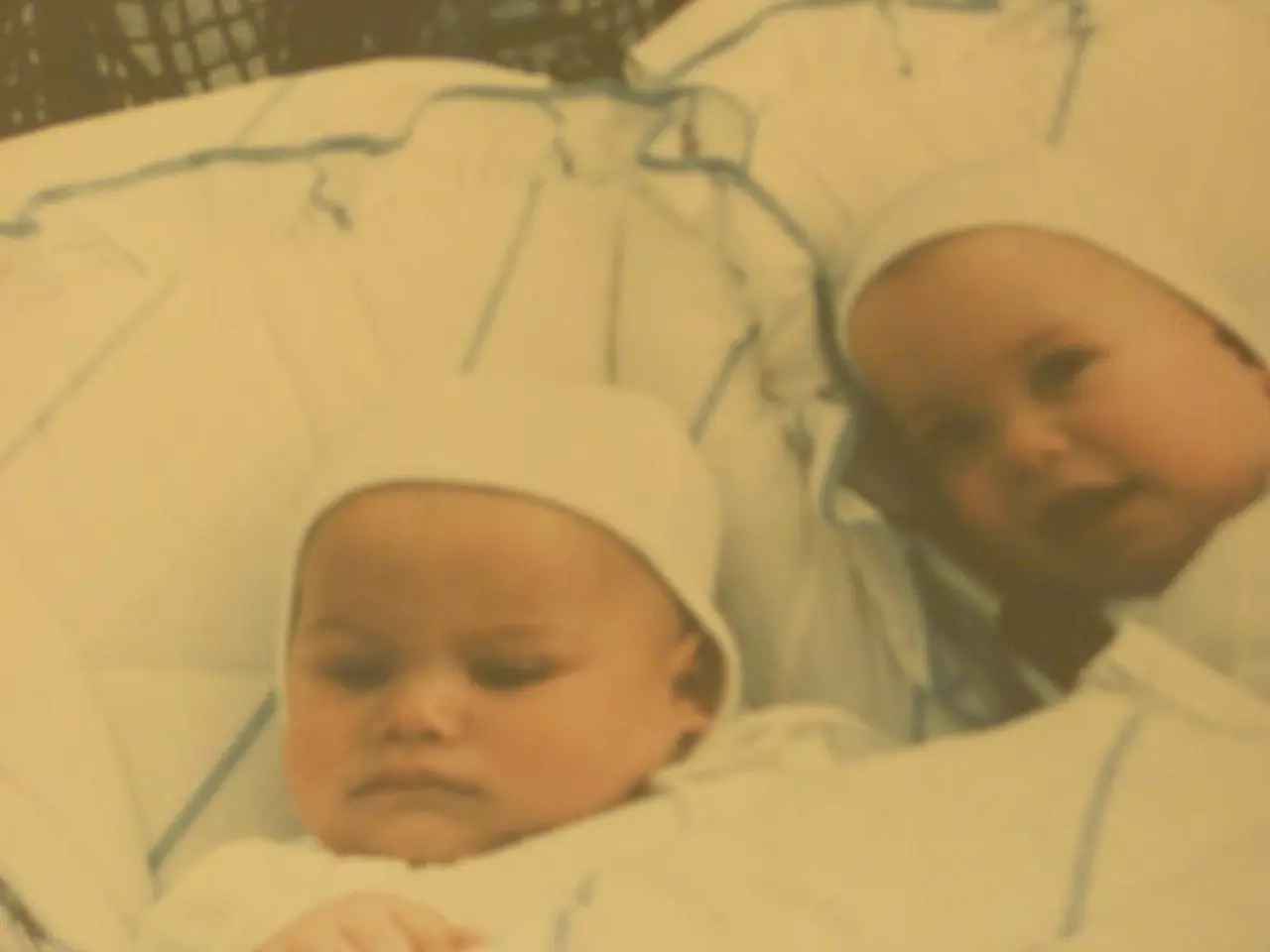Daily Optical Illusions Unveiling the Shortcuts Your Brain's Habitual Pathways
Taking a peek at an image might leave you scratching your head-and that's not just because it's bizarre or fascinating. It's all about how your brain processes reality, using shortcuts and tricks that often go unnoticed.
These mind-bending optical illusions have a hidden charm-they uncover your brain's secret moves, revealing its impressive yet imperfect way of making sense of the world.
Don't think these magical tricks are limited to your eyes-your brain is up to all sorts of optical illusions, skewing your perception in ways you might never suspect.
Here's the Lowdown on How Optical Illusions Work:
1. Brain versus Eyes: A Mystery Unveiled
Contrary to popular belief, your eyes don't paint a high-definition snapshot of the world for your brain. Instead, they provide raw, fragmented data. Your brain steps in to create a coherent visual experience by combining this data with memory, prediction, and assumptions.
It's a team effort between your eyes, brain, and a healthy dose of assumptions!
2. Starring in the Illusion Show
Illusions generally fall into three main categories:
a. Literal Illusions
These illusions present images that contradict actual objects. For example, the Ames Room plays with perspective, making one person appear much larger than another, despite shared dimensions.
b. Physiological Illusions
These illusions result from overstimulating the visual system to send mixed signals that your brain struggles to process. An example is the Hermann grid, where dark dots seem to appear at intersections due to a lateral inhibition process in the retina.
c. Cognitive Illusions
These illusions rely on higher-order thinking, making assumptions based on context and expectations. Think of the famous Rubin vase (two faces or a vase?) or the Mueller-Lyer illusion (pair of lines looking different in length).
In each case, your brain engages in a guessing game, deciding what to see based on its biases and preconceptions.
The Big Reveal: What Optical Illusions Tell Us
Your brain is designed to work fast, not for accuracy. To manage the chaotic realities of life, it relies on a set of perceptual heuristics, using mental shortcuts to prioritize and filter sensory data.
Optical illusions highlight the places where those shortcuts break down. These shortcuts include:
- Visual Grouping: Your brain tends to group elements based on proximity, similarity, and continuity.
- Predictive Processing: Your brain fills in gaps using patterns, experience, and expectations, reducing the burden of real-time processing.
- Confirmation Bias: Prior knowledge and expectations influence what you see, sometimes overriding raw data.
The Illusions That Trip You Up Unnoticed
Visual illusions steal the spotlight, but your brain also creates cognitive and emotional illusions-distorted beliefs and interpretations that feel genuine but are shaped by biases, habits, or incomplete data.
Some examples of cognitive and emotional illusions include:
- Confirmation Bias: Believing what you expect to see instead of what's actually there.
- False Memories: "Remembering" events that didn't occur.
- Negativity Bias: Placing excess emphasis on bad experiences.
Just like visual illusions, these mental distortions stem from your brain's quest for simplicity.
The Grand Scheme: The Brain's Efficiency Model
The brain consumes a lot of energy. To function efficiently, it uses prediction to minimize real-time processing, reducing its energy consumption.
It's all about striking a balance between accuracy and energy conservation.
Gaining a Clearer Perspective: Can You Train Your Brain?
You can't completely eliminate illusions, but you can cultivate mental habits that minimize their negative impact in your daily life.
Here's how to steer clear of the pitfalls of perception:
- Slow Down Perception: Deliberately pausing before reacting gives your brain a chance to revise its predictions instead of relying on auto-assumptions.
- Practice Perspective Shifting: Be like a chameleon, adapting your viewpoint to see different angles. This helps strengthen cognitive flexibility.
- Train Attentional Control: Boost your ability to direct and sustain attention through meditation, breathwork, and focus exercises.
- Learn to Spot Your Own Biases: Keep track of times when you were certain about something that turned out to be incorrect. Pattern recognition here can help build metacognitive awareness.
Brain Boosters: A Look at Nootropics
Some people use nootropic supplements to support attention, mental clarity, and cognitive flexibility-exactly the systems that help navigate a world filled with perceptual noise and mental shortcuts.
Popular nootropics include:
- Citicoline: Supports processing speed, clarity, and focus.
- L-theanine: Enhances calm attention, ideal for reducing overstimulation and mistakes.
- Bacopa monnieri: May improve memory accuracy and integration.
Although these supplements can't "cure" illusions, they can help reduce the impact of distraction, stress, and cognitive overload.
Embracing the Magic: Optical Illusions as Mental Training Tools
Instead of merely enjoying optical illusions as curiosities, leverage them as mental training tools. Practice looking at illusions, describing both what you see and what you know to be true. Change your perspective and ask, "What assumptions is my brain making here?" Use illusions as metaphors when making decisions to spot potential blindspots.
Over time, this builds skeptical empathy with your own mind, making you more mindful of your brain's shortcuts without overidentifying with them.
Glimpse the Hidden Reality Beyond the Illusion
Illusions aren't mere tricks for the eyes. They're windows into understanding the agile, complex, and fallible nature of human perception. They shed light on the fascinating interplay between assumptions, patterns, and survival-driven models as they shape our perception of reality.
Knowing the mind's tricks doesn't make you immune to its deceptions. But with awareness comes the power to challenge assumptions, spot biases, and think more critically-a powerful advantage indeed!
So the next time your eyes deceive you, embrace the moment. You've just witnessed the marvel of your perceptive skills at work.
- The brain doesn't simply receive a high-definition snapshot of the world from the eyes; instead, it combines raw, fragmented data from the eyes with memory, prediction, and assumptions to create a coherent visual experience.
- Optical illusions present images that contradict actual objects, overstimulate the visual system, or rely on higher-order thinking, making assumptions based on context and expectations, revealing the brain's shortcuts and biases.
- The brain's perceptual heuristics, such as visual grouping, predictive processing, and confirmation bias, help it manage chaotic realities, but can sometimes lead to inaccuracies and distortions.
- Cognitive and emotional illusions, like confirmation bias, false memories, and negativity bias, are distorted beliefs and interpretations shaped by biases, habits, or incomplete data, stemming from the brain's quest for simplicity.
- To minimize the negative impact of perceptual heuristics, one can slow down perception, practice perspective shifting, train attentional control, learn to spot one's own biases, and adopt nootropics for improved attention, mental clarity, and cognitive flexibility.
- Some popular nootropics include Citicoline, L-theanine, and Bacopa monnieri, which can help reduce the impact of distraction, stress, and cognitive overload.
- Optical illusions can serve as mental training tools, helping one to develop skeptical empathy with one's own mind by challenging assumptions, spotting biases, and thinking more critically, ultimately supporting better mental health and wellness.








